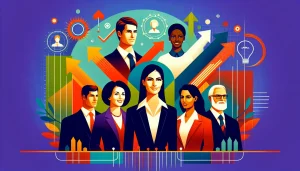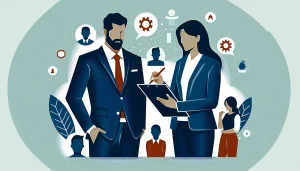Fostering creativity and innovation in Government
While fostering creativity and innovation in government may sound like a positive endeavor, there are potential negative impacts that should be considered. Firstly, it can lead to instability and inconsistency in policymaking. When new and innovative approaches are constantly being introduced, it becomes difficult for the government to maintain a consistent long-term strategy. This can result in confusion and inefficiency, ultimately hindering effective governance.
Additionally, fostering creativity and innovation may divert resources away from critical functions of government. Innovation often requires significant investment, both in terms of finances and manpower. This can lead to a neglect of essential services such as education, healthcare, and infrastructure development, which are crucial for the well-being of citizens.
Furthermore, increased creativity and innovation can inadvertently lead to a lack of accountability. As new ideas are implemented and experiments are conducted, failures are inevitable. However, an overemphasis on fostering creativity may discourage the government from admitting and rectifying mistakes, as it may be seen as hindering progress or innovation.
Ultimately, while creativity and innovation are important in government, it is essential to strike a balance and carefully consider the potential negative consequences that may arise from an excessive focus on these aspects.
The impact of technology in resolving fostering creativity and innovation in government cannot be overstated. Technological advancements have revolutionized the way governments operate, making processes more efficient, transparent, and accessible. Let us delve into how and why technology plays a pivotal role in promoting creativity and innovation in government.
Firstly, technology provides governments with the necessary tools and platforms to streamline their operations. From automation software to data analytics tools, technology enables governments to collect, analyze, and interpret vast amounts of data. By harnessing the power of data, governments can identify areas for improvement, make informed decisions, and devise innovative policies. For instance, data analysis might reveal patterns of citizen behavior that can be utilized to create customized public services.
Additionally, technology enables enhanced collaboration between various government entities. Through digital platforms and project management tools, government officials can work together seamlessly, irrespective of their physical locations. This facilitates the exchange of ideas, knowledge sharing, and the fostering of creativity. When different stakeholders collaborate and bring their unique perspectives to the table, innovative solutions can emerge.
Moreover, technology facilitates citizen engagement and participation in the policymaking process. Through online platforms, citizens can express their opinions, provide feedback, and contribute to decision-making processes. This inclusivity and constant interaction between the government and its citizens create an ecosystem that fosters creativity and innovation. Ideas and suggestions from diverse backgrounds are more likely to emerge, leading to innovative solutions that cater to the needs and aspirations of the public.
Furthermore, technology opens up avenues for experimentation and risk-taking. Governments can create innovation labs or sandboxes where new ideas and technologies can be tested without the fear of immediate consequences. This encourages public officials to think outside the box, take risks, and explore unconventional solutions. Through rapid prototyping and agile methodologies, failures can be quickly identified, learned from, and improved upon, leading to an environment that embraces creativity and innovation.
In conclusion, technology has had a profound impact on resolving fostering creativity and innovation in government. By leveraging the power of data, promoting collaboration, engaging citizens, and creating spaces for experimentation, technology transforms government from a bureaucratic entity to an agile and innovative organization. Embracing technology is crucial for governments seeking to remain competitive, responsive, and adaptable in the fast-paced and ever-evolving world we live in today..
Leadership coaching
Leadership coaching propels careers by refining leadership skills, enhancing emotional intelligence, and fostering adaptability in any dynamic business environment. It equips leaders for new and higher responsibilities, improves team dynamics, and encourages continuous learning and strategic planning, paving the way for professional success and fulfilment.
Get a leadership coach on www.coachup.sg. For more Grow As A Leader content, check out Growasaleader.co





